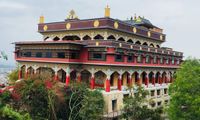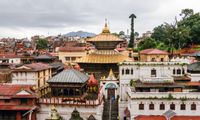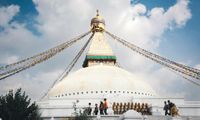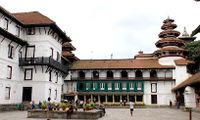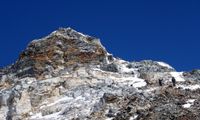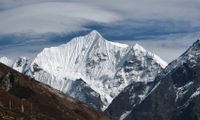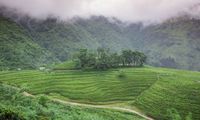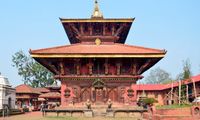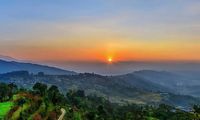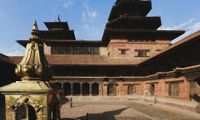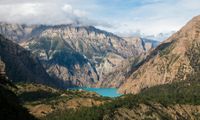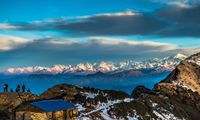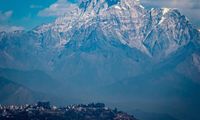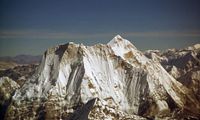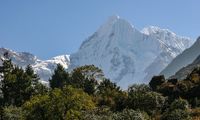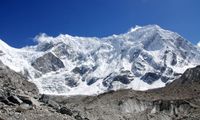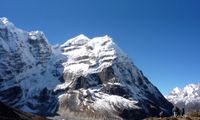Kori Himal/ Kori Danda
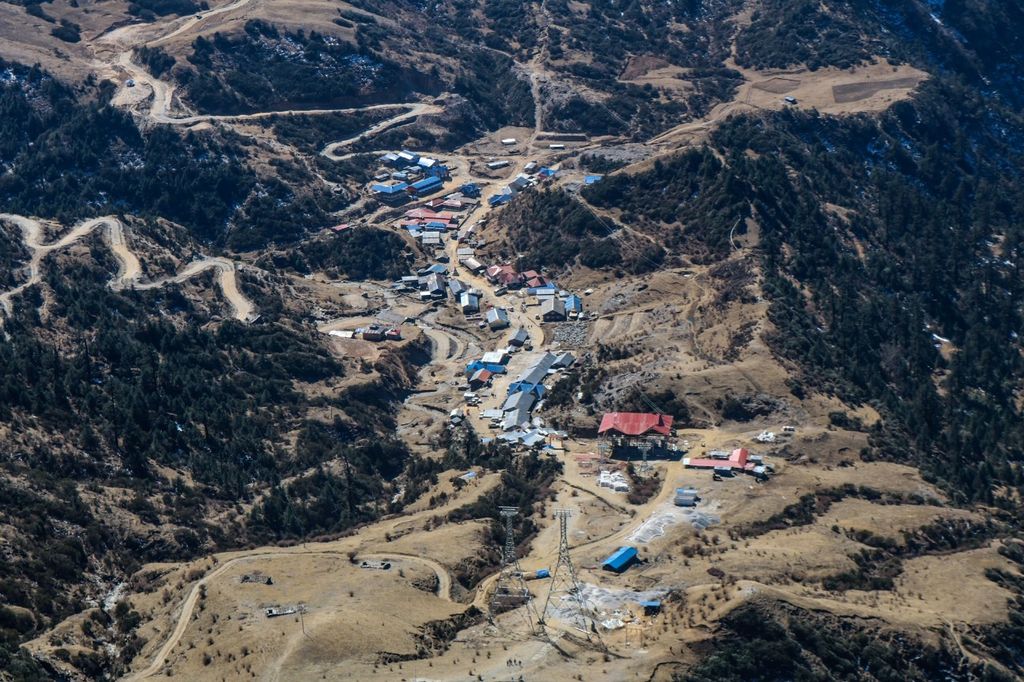
About
Kori Danda is a peaceful, offbeat trekking destination near Sikles village in Nepal’s Kaski district. At 3,800 meters, it offers breathtaking views of Machhapuchhre and Annapurna II. Known for its untouched beauty, quiet trails, and rich Gurung culture, Kori Danda is ideal for those seeking solitude, nature, and authentic local experiences.
Locate Us
Kori Himal Nepal, also called Kori Hill, is a hidden treasure tucked away in the Lamjung District of Gandaki Province. Located at an altitude of approximately 3,800 meters above sea level, this serene highland is a peaceful and raw Himalayan destination that still remains off the radar of mass tourism. Surrounded by Gurung villages, pristine forests, and alpine pastures, Kori Himal offers a rare chance to witness the untouched beauty of rural Nepal. Unlike the crowded routes of Annapurna or Everest, Kori Himal Nepal invites travelers with silence, purity, and authenticity.
Overview
Kori Danda, perched above the beautiful Sikles Village in the Annapurna region of Nepal, is one of the most peaceful and rewarding destinations for off-the-beaten-path trekking in Nepal. This lesser-known viewpoint offers 360° views of Lamjung Himal, Annapurna II, and Mardi Himal, attracting nature lovers and adventure seekers. The trail from Sikles takes you through dense rhododendron forests, colorful alpine meadows, and quiet villages like Tangting, where you’ll experience authentic Gurung culture.
Locals welcome you with traditional Gurung music, dance, and cuisine—including dhido, gundruk, and sel roti. In spring, rare wildflowers bloom along the ridgelines, and in winter, the landscape transforms into a peaceful snowy escape. The area supports sustainable and responsible travel with local guides and porter services available.
To get there, drive about 5 hours from Pokhara to Sikles, then hike for two days to reach Kori Hill. The route is accessible in both summer and winter, making it an ideal year-round destination. You can combine your visit with nearby attractions like Tara Top and Kori Danda Ridge. For those looking to escape the crowds and dive into nature and culture, Kori Danda is an emerging gem worth every step.
Best Time to Visit Kori Himal – Monthly Weather Insights
Choosing the best time to visit Kori Himal Nepal is essential to ensure a safe and rewarding experience. Since the destination lies in Nepal’s mid-hill region and leads to alpine terrain above 3,800 meters, its climate varies significantly throughout the year. Here's a detailed month-by-month breakdown to help you plan your journey.
1. Spring (March to May):
- Ideal for trekking and nature lovers.
- Clear skies, blooming rhododendrons, and lush green forests make this one of the most photogenic times to visit.
- Temperatures are mild (10°C–20°C in lower regions), and the trails are dry and comfortable.
- This is a great time for birdwatching and observing Himalayan flora.
- Villages like Bhujung and Pasgaun are full of activity as locals prepare for the planting season.
- Spring is considered the peak season for Kori Himal Nepal due to its favorable conditions and vibrant natural beauty.
2. Summer/Monsoon (June to August):
- Not recommended for trekking in Kori Hill.
- Heavy rainfall causes muddy and slippery trails, leeches in forested areas, and increased risk of landslides.
- Cloudy skies often obscure mountain views, and flight/road delays are common.
- However, the landscape turns very green and lush, making it visually stunning if you're staying in nearby villages.
- Those visiting for cultural research or village stays (not trekking to the top) may still enjoy this season with caution.
3. Autumn (September to November):
- The most popular and stable season for visiting Kori Himal Nepal.
- Post-monsoon clarity ensures breathtaking views of the Annapurna, Lamjung Himal, and Manaslu ranges.
- The days are warm, and the nights are cool—ideal for both trekking and photography.
- Festivals like Dashain and Tihar fall during this season, adding cultural value to your trip.
- Trails are usually dry and the natural scenery is at its most spectacular.
4. Winter (December to February):
- Best for snow lovers and adventure seekers.
- Kori Hill is covered in snow, transforming it into a magical winter wonderland.
- Trekking is still possible but requires proper gear and preparation.
- Temperatures can fall below 0°C at night, especially at higher elevations.
- There are fewer travelers, so if you're well-prepared, you can enjoy solitude and silent landscapes.
- Camping is necessary near the summit as local accommodations may be closed or limited during the coldest months.
Final Weather Tips for Kori Himal Nepal Travelers:
- Always check local weather forecasts before your trip, especially if you're trekking.
- Avoid monsoon season unless your goal is village-based cultural experiences and not reaching the summit.
- Layered clothing is essential for all seasons, as temperatures can vary drastically between day and night.
- Plan at least 4–5 days to fully enjoy the trek, photography, village visits, and natural surroundings.
By understanding the seasonal variations and planning accordingly, you’ll be able to experience the best of what Kori Himal Nepal has to offer, whether it's colorful spring flowers, golden autumn views, or snowy winter peaks.
Weather: A Typical Day in Kori Danda
A typical day at Kori Danda offers a refreshing mountain atmosphere, shaped by its high-altitude location (around 3,800 meters) in the Annapurna region of Nepal.
- Morning: Mornings at Kori Danda are usually cold and misty. Temperatures range from 5°C to 10°C, especially during spring and autumn. The sun slowly rises above the hills, casting golden light over the snow-capped peaks and rhododendron-covered slopes.
- Afternoon: The temperature warms slightly, averaging 12°C to 18°C. This is the best time for trekking, enjoying clear mountain views, and relaxing in the alpine meadows. Skies are often clear, offering excellent visibility of the Himalayan range, including Annapurna and Lamjung Himal.
- Evening: As the sun sets, temperatures drop quickly below 5°C, and the chill returns. The nights can get freezing, especially in winter, with frost or snow depending on the season.
Monthly Weather Overview
- January – February (Winter): Coldest months with temperatures often below freezing at night. Snow may cover higher trails. Daytime is crisp but chilly, perfect for trekkers prepared for cold weather.
- March – May (Spring): One of the best times to visit. Temperatures gradually rise, rhododendron flowers bloom, and skies are mostly clear. Daytime temperatures range from 10°C to 18°C.
- June – August (Monsoon): Heavy rains and frequent clouds make trekking difficult. Trails become slippery and risky due to landslides. Not recommended for trekking during this time.
- September – November (Autumn): Another prime trekking season with stable weather, clear blue skies, and excellent mountain visibility. Temperatures range between 10°C and 18°C during the day.
- December (Early Winter): Cool and dry with clear skies. Nights become very cold, and snow may begin to accumulate at higher elevations.
Weather at Kori Hill can change rapidly, so it’s essential to carry layered clothing, windproof jackets, and rain protection at all times.
Height and Altitude of Kori Himal
Kori Himal, also locally known as Kori Danda, stands tall at an altitude of approximately 3,800 meters (12,467 feet) above sea level. This serene hilltop lies within the Lamjung district of Nepal and is part of the scenic Annapurna Conservation Area.
The elevation of Kori Himal makes it a perfect high-altitude viewpoint without being overly challenging for moderately fit trekkers. Since it lies below the extreme Himalayan altitudes (above 4,000 meters), it’s ideal for travelers who want to witness the snow-capped peaks of Annapurna II, Lamjung Himal, and Manaslu without the need for acclimatization or high-altitude mountaineering experience.
Despite its height, the trail to Kori is considered less technical and more peaceful, with fewer crowds compared to popular trekking routes. The altitude also contributes to the biodiversity of the region, offering unique alpine flora, occasional snow in winter, and crisp mountain air year-round.
Whether you are trekking for spiritual retreat, adventure, or photography, the altitude of Kori Himal ensures both breathtaking views and a refreshing highland atmosphere, making it a hidden gem in the Himalayas of Nepal.
How to Get to Kori Himal (Kori Danda)?
Reaching Kori Himal, also known as Kori Danda or Kori Hill, is an adventurous and scenic journey through the Annapurna region of Nepal. Here’s how you can reach this peaceful and off-the-beaten-path destination:
- From Pokhara:
Take a private jeep or local vehicle to Sikles, one of the oldest and most picturesque Gurung villages in the Annapurna region. The drive takes approximately 4 to 5 hours, depending on road conditions.
- From Sikles to Kori Hill:
Begin your 2-day hike from Sikles, passing through rhododendron forests, small streams, and grassy meadows. The tra Take a private jeep or local vehicle to Sikles, one of the oldest and most picturesque il is moderately challenging but filled with natural beauty, traditional rest stops, and scenic ridge walks.
- From Kathmandu:
Travel from Kathmandu to Pokhara by tourist bus or flight. The road journey takes about 6–7 hours, while the flight is around 30 minutes. After reaching Pokhara, follow the same route to Sikles and then trek to Kori Danda.
The route from Sikles to Kori passes through lush rhododendron forests, alpine pastures, and hilltop meadows before revealing the panoramic Kori Viewpoint, offering views of Lamjung Himal, Annapurna II, and other Himalayan giants.
Related Treks Starting from Kori Hill:
If you’re drawn to the serene beauty and untouched trails of Kori Hill (also known as Kori Danda), you’re in for an unforgettable adventure through some of Nepal’s most charming and off-the-beaten-path trekking routes. Nestled in the heart of the Annapurna region, these treks invite you to escape the crowds and experience the real soul of Himalayan trekking. Whether you’re a seasoned trekker or a nature lover seeking peaceful trails, here are three captivating treks starting from Kori Hill that will stir your heart and ignite your wanderlust.
1. The Enchanting Kori Hill Trek (5 Days):
This 5-day Kori Hill trek is perfect for travelers longing to wander where few have tread before. Starting from the traditional Sikles village, the trail gently ascends through fragrant rhododendron forests, sweeping alpine meadows, and quaint Gurung settlements. Each step unveils breathtaking views of the towering Annapurna II, majestic Lamjung Himal, and the distant Mardi Himal peaks. This trek is not just a physical journey but a soulful escape, offering moments of silence, star-filled nights, and warm smiles from local villagers. Ideal for those searching for an authentic and offbeat trekking experience in Nepal, the Kori Hill trek rewards you with untouched nature and cultural richness far from the usual tourist routes.
2. Sikles to Kori Hill Loop: A Perfect Blend of Culture and Scenery:
For travelers who want to immerse themselves deeply into Gurung culture while soaking in pristine natural beauty, the Sikles to Kori Hill loop is a dream come true. This trek starts and ends in Sikles, one of the most picturesque and largest Gurung villages in the Annapurna foothills. Along the loop, you’ll traverse traditional farming terraces, dense forests alive with birdsong, and hilltops with panoramic Himalayan views that seem to stretch endlessly. This route offers a unique balance of vibrant cultural encounters—like witnessing traditional dance and tasting homemade delicacies—and the refreshing solitude of alpine trails. It’s a rewarding journey that connects you with the heartbeat of Nepal’s mountain people and the breathtaking landscapes they call home.
3. Kori to Tara Hill Ridge Hike: For the Adventurous and Solitude Seekers:
For those craving a more adventurous and remote trek, the Kori to Tara Hill ridge hike is an exquisite escape. Trekking this ridge trail means walking along a natural spine that links two spectacular viewpoints: Kori Hill and Tara Top. This path offers uninterrupted, sweeping views of the Annapurna range, Lamjung Himal, and the lesser-known mountain jewels that surround them. The ridge is a sanctuary for photographers, nature lovers, and anyone seeking peace away from crowded trails. Nights spent camping under the infinite Himalayan stars here are magical, allowing you to connect with the raw spirit of the mountains. This trek perfectly suits those who value solitude, natural beauty, and the thrill of exploring offbeat trekking routes in Nepal.
Whether you choose the classic Kori Hill trek, the cultural richness of the Sikles loop, or the remote beauty of the ridge hike to Tara Hill, each journey promises a unique tapestry of stunning landscapes, heartfelt local connections, and unforgettable moments. These hidden gems of Annapurna trekking invite you to step off the beaten path and discover Nepal’s true wilderness and warmth.
Things to Do in Kori Himal – Culture, Nature, and Local Living
Kori Danda is a tranquil highland perfect for adventure seekers and cultural travelers. Whether you're aiming for breathtaking views or deep-rooted cultural experiences, here's what makes Kori Danda trekking in Nepal truly special:
1. Trekking and Off-Grid Hiking
The Kori Danda trek is ideal for those seeking off-the-beaten-path trekking in Nepal. The trail winds through peaceful forests, rolling hills, and alpine ridges, offering close encounters with nature and jaw-dropping views of Annapurna II, Lamjung Himal, and Mardi Himal.
2. Nature and Birdwatching
The route to Kori Hill is rich in biodiversity. Spot exotic birds, butterflies, and even rare Himalayan flora. During spring, the trail comes alive with rhododendron blossoms and colorful wildflowers, offering a paradise for photographers and nature lovers.
3. Meditation and Solitude in Nature
Far from commercial routes, Kori Danda offers peace and silence ideal for mindfulness, yoga, and meditation. Enjoy the mountain silence, crisp air, and spiritual connection to nature.
4. Camping Under the Stars
Pitch your tent under a star-filled Himalayan sky. Kori Danda’s clear skies and open spaces make it a dream spot for overnight camping and photography.
5. Local Culture and Traditions
Kori Danda itself is uninhabited, but nearby villages like Sikles and Tangting offer a rich Gurung cultural experience. Here's what you can enjoy:
- Traditional Gurung Dance and Music:
Witness or participate in lively Gurung folk dances and songs performed during local celebrations. - Local Language and Oral Traditions:
Learn a few Gurung words and hear oral tales passed down through generations. - Handmade Crafts and Garments:
Shop for locally crafted woolens, ornaments, and handmade souvenirs by Gurung artisans. - Hospitality in Community Homestays:
Stay in authentic Gurung homestays, enjoy homemade meals like dhido and gundruk, and experience the warmth of rural Nepali life.
Where to Stay in Kori Himal ?
When trekking to Kori Himal, accommodation options are simple but offer a chance to experience local culture and the natural environment intimately. Since Kori Himal is still a developing travel destination, travelers can choose between homestays, guesthouses in nearby villages, or camping on the summit itself.
Homestays:
For travelers seeking an authentic cultural experience, staying in homestays around Kori Himal is an excellent choice. Nearby villages like Bhujung, Ghalegaun, and Pasgaun offer several community-run homestays supported by the local tourism board. These homestays provide clean rooms, warm hospitality, and delicious home-cooked meals featuring traditional dishes such as dhido, gundruk, and buckwheat bread. Guests can also enjoy evenings filled with Gurung music and dance performances, offering a deep connection to the local lifestyle. Homestays are affordable, safe, and directly benefit the local community, making them a meaningful accommodation option for responsible travelers.
Guesthouses:
In addition to homestays, the region features a few guesthouses that cater to trekkers passing through. These guesthouses are typically family-run, offering comfortable rooms with basic amenities. They provide a welcoming environment for rest and relaxation after a long day of trekking. Staying in a guesthouse allows visitors to interact with local hosts while enjoying simple comforts like warm meals and clean bedding. Though limited in number, guesthouses around Kori Himal contribute to the growing tourism infrastructure in the area.
Camping:
At the summit of Kori Himal itself, accommodation options are very limited as there are no permanent tea houses or hotels. Most trekkers choose to camp overnight, bringing tents and sleeping bags or hiring local guides who provide camping equipment. Camping under the stars on Kori Hill offers a unique experience — the tranquility of the high Himalayas, clear night skies, and breathtaking sunrises. While camping requires more preparation, it allows for greater flexibility and immersion in nature, making it a popular choice for adventurous travelers.
Do You Need a Permit for Kori Himal?
One of the most frequently asked questions is about permits. As of now, you do not need a special trekking permit to visit Kori Himal, unlike restricted areas such as Manaslu or Upper Mustang.
However, it's always recommended to check with the Lamjung Tourism Office in Besishahar for the latest rules. If you're hiring a guide or staying in registered homestays, most formalities will be handled for you.
For safety and accountability, it's a good practice to register your name and itinerary at the nearest checkpoint, especially if you're trekking independently.
Is Kori Himal Safe for Solo Travelers?
Kori Himal Nepal is a relatively safe destination for solo travelers, but there are some things to keep in mind. Since it’s a lesser-known trail, the routes may not be as well-marked or developed. There are limited emergency facilities and fewer fellow trekkers on the trail.
If you’re traveling solo, it's best to hire a local guide or porter from Bhujung or Ghalegaun. Not only does it make the journey safer, but it also enriches your experience through stories, local knowledge, and cultural exchange.
Always carry essentials like water, snacks, basic medicine, a flashlight, power bank, and a trekking map. Mobile networks may be weak, so inform someone in advance about your route and expected return.
Kori Himal vs Annapurna – Which One Should You Choose?
When choosing between Kori Himal and the Annapurna region, it’s key to understand their differences. Annapurna is a well-established trekking destination with developed trails, comfortable tea houses, and modern amenities like Wi-Fi, perfect for beginners and those who want convenience. In contrast, Kori Himal offers a peaceful, off-the-beaten-path experience with raw natural beauty and authentic Gurung culture. It has minimal infrastructure, fewer tourists, and is ideal for travelers seeking solitude and cultural immersion.
When deciding between Kori Himal and the Annapurna region, it’s important to understand what makes each destination unique. Both offer incredible experiences but cater to different types of travelers.
Unique Features of Annapurna Himal:
- Well-developed trekking routes like Annapurna Base Camp and Poon Hill
- Abundant tea houses, lodges, and guesthouses with modern amenities
- Easy access to electricity and Wi-Fi in most villages
- High tourist traffic and social atmosphere
- Guided tours and organized trekking packages readily available
- Suitable for first-time trekkers and those seeking comfort and convenience
Unique Features of Kori Himal:
- Untouched and peaceful trekking trails with very few visitors
- Authentic Gurung villages like Sikles and Tangting offering cultural immersion
- Minimal tourism infrastructure — no shops or busy lodges at the summit
- Ideal for camping under pristine starry skies
- Rich biodiversity including rhododendron forests and Himalayan wildlife
- Perfect for off-the-beaten-path explorers seeking nature and solitude
Your choice between Annapurna and Kori Himal depends on the experience you seek. Annapurna offers well-marked trails, cozy tea houses, and modern comforts like Wi-Fi, making it perfect for beginners and those who enjoy social trekking with plenty of support. It’s lively, convenient, and ideal if you want a structured adventure.
Kori Himal, however, is for travelers who crave solitude, untouched nature, and authentic cultural immersion. With fewer tourists and minimal infrastructure, it lets you connect deeply with the peaceful landscape and Gurung communities. This off-the-beaten-path trek is perfect for those wanting a quiet, meaningful escape into Nepal’s natural and cultural heart.
Nearby Attractions and Villages Around Kori Himal
Kori Himal is not just about the breathtaking views from the hilltop—it’s also a gateway to some of the most culturally rich and naturally beautiful villages in the Annapurna region. Surrounding Kori Hill, you’ll find traditional Gurung settlements, community-based tourism models, and picturesque valleys that offer the perfect blend of trekking, homestay experience, and cultural immersion. These nearby attractions are easily accessible as part of a round trip or extended trek from Kori Himal, making your journey even more rewarding.
Sikles Village:
Sikles is a traditional Gurung village nestled in the scenic Annapurna foothills and serves as the gateway to the Kori Danda trek. Rich in Gurung culture, this well-preserved heritage village offers trekkers a unique experience of local life, traditional architecture, and warm hospitality. The homestay options in Sikles are clean, family-run, and often serve authentic Gurung meals like dhindo, gundruk, and buckwheat bread. This village also hosts cultural performances and has small museums showcasing Gurung heritage.
Trekkers starting their Kori Himal trek from Sikles can enjoy stunning views of Lamjung Himal, Annapurna II, and Mardi Himal even before reaching higher elevations. Due to its accessibility from Pokhara and its authentic ambiance, Sikles has become one of the top cultural trekking destinations in Nepal.
Tangting Village:
Tangting is a lesser-known but incredibly peaceful village situated along an alternate route to Kori Danda. It lies hidden between lush hills and terraced fields, offering an untouched and serene setting for those seeking solitude during their Kori Himal trekking in Nepal. Unlike more commercial trails, Tangting provides a true sense of remote village life—simple stone houses, cattle grazing fields, and warm-hearted locals who live off farming and livestock.
Tangting is ideal for trekkers looking to avoid the crowd and connect more deeply with nature and culture. The trail from Tangting to Kori Hill passes through rhododendron forests and open meadows, with occasional viewpoints showcasing Himalayan panoramas. Adding Tangting to your Kori Danda trek itinerary brings depth to the journey—both culturally and scenically.
Bhujung Village:
Located at an elevation of around 1,650 meters, Bhujung is one of the largest and most authentic Gurung settlements in Nepal. Known for its cluster of stone-built traditional houses and terraced hillsides, Bhujung offers visitors an unforgettable experience of rural life in the Himalayas. The locals are warm and welcoming, often engaging tourists in traditional dances, local cuisine, and handicrafts. The village is also renowned for its involvement in community-based tourism and hydroelectric projects. It serves as a great resting point on your way to or from Kori Danda. You can consider linking to Bhujung village homestay experiences or a community tourism blog for deeper insights.
Pasgaun Village::
Pasgaun is a peaceful Gurung village that is gaining popularity among trekkers looking for a quiet and scenic escape. It is part of the Ghalegaun–Bhujung–Pasgaun circuit which is promoted under the “Gurung Heritage Trail.” The trails connecting Pasgaun to Kori Himal are surrounded by lush rhododendron forests, rice terraces, and panoramic mountain views. The traditional lifestyle, stone-roofed houses, and organically grown food make Pasgaun a perfect location for overnight stays. Internal links could include a Pasgaun trekking guide or Gurung culture tour package.
Ghalegaun Village:
Ghalegaun, often referred to as the "model tourism village" of Nepal, is a flagship destination for community-based tourism in the Lamjung district. It offers well-organized homestays with basic amenities, delicious local food, and nightly cultural performances that highlight Gurung traditions. The village sits at around 2,100 meters and provides panoramic views of Annapurna and Lamjung Himal, similar to Kori Danda. Many visitors begin their trek to Kori Himal from Ghalegaun, making it a strategic point to include in your itinerary.
Local Insights That Make Kori Unique
Spring Blooms: Rhododendrons and Wild Orchids
Kori Himal comes alive every spring when vibrant rhododendrons paint the hillsides in brilliant reds and pinks, while delicate wild orchids bloom quietly among the alpine meadows. This floral spectacle transforms the trekking trails into a stunning natural gallery that delights photographers and nature lovers alike, making spring one of the most magical times to visit Kori Hill.
Wildlife: Himalayan Monals, Eagles, and Snow Leopard Tracks (Rare!)
The region around Kori Himal boasts rich biodiversity. Trekkers often spot the dazzling Himalayan monal pheasant, Nepal’s national bird, fluttering through the forest canopy. Majestic eagles soar high above, while the occasional, elusive snow leopard tracks remind visitors of the wild and untouched nature that still thrives here—though sightings are incredibly rare, the signs of these secretive predators add an exciting layer to the trekking experience.
Folklore: Locals Believe the Hilltop Was Once a Site of Spiritual Meditation
Local villagers share ancient stories and folklore that Kori Hill’s summit was once a sacred place used for spiritual meditation and reflection. This belief lends the hilltop a peaceful and almost mystical atmosphere, inviting trekkers to connect deeply with the serene surroundings and the tranquil spirit of the mountains.
Festivals: Gurung New Year (Tamu Lhosar)
Just a short distance from Kori Himal lies the vibrant Gurung village of Sikles, where the Gurung New Year festival, Tamu Lhosar, is celebrated with lively traditional music, dance, and colorful rituals. Visitors during festival time have the unique chance to witness and participate in these joyous celebrations, gaining authentic insight into the rich culture and traditions of the Gurung people who call this region home.
Kori Himal: Location, Elevation, and Geographic Features
Kori Himal is located at approximately 28.3087° N latitude and 84.4382° E longitude, nestled in the heart of the Annapurna region of Nepal. This peaceful and lesser-known trekking destination rises to an elevation of about 3,800 meters (12,467 feet) above sea level.
Surrounded by pristine natural beauty, Kori Himal offers a perfect blend of scenic landscapes, alpine charm, and Himalayan serenity. The region is known for its diverse ecological zones, featuring lush rhododendron forests, alpine meadows, and rare Himalayan wildlife. Trekkers often witness musk deer, Himalayan monals, and grazing yaks along the trails.
In spring, the entire landscape transforms into a vibrant paradise with blooming flowers, while autumn brings clear skies and spectacular views of the surrounding peaks. During winter, Kori Danda becomes a snowy retreat, offering a stark yet beautiful contrast to the greenery of the lower hills.
Whether you're trekking for nature, photography, or a peaceful escape, Kori Himal's elevation and rich geography promise a truly rewarding Himalayan experience.
Is Kori Himal Worth Visiting?
Absolutely, Kori Himal is worth visiting for anyone seeking untouched Himalayan beauty, peaceful trekking trails, and immersive local culture. Unlike more commercialized routes in Nepal, Kori Hill offers solitude, scenic diversity, and authentic encounters with Gurung villages like Bhujung, Ghalegaun, and Pasgaun. The 3,800-meter elevation gives panoramic views of Lamjung Himal, Annapurna II, and Manaslu, while the trails pass through forests, terraced hills, and alpine meadows. Whether you're a nature photographer, a spiritual traveler, or a hiker looking for less-crowded destinations, Kori Himal is a hidden gem that offers a rewarding and peaceful Himalayan experience.
For travelers interested in eco-tourism or village homestays, the surrounding area is also ideal for combining adventure with cultural immersion, making your trip both meaningful and memorable.
Kori Himal Travel Tips –
When planning your trek to Kori Himal Nepal, being well-prepared can make all the difference between an enjoyable adventure and an exhausting ordeal. This guide provides essential travel tips to help you navigate the terrain safely, pack appropriately, and make the most of your experience. From understanding the fitness requirements and packing essentials to accommodation options and connectivity challenges, these pointers will ensure you are ready for the unique journey that Kori Himal offers.
Fitness Level:
- Moderate physical fitness is sufficient for the trek.
- Trails are moderately challenging due to altitude (~3,800 meters).
- Prepare with cardio exercises like walking, jogging, or cycling before the trip.
- Use trekking poles to reduce knee strain.
- Pace yourself, stay hydrated, and watch for altitude sickness symptoms.
Packing Essentials:
- Pack layered clothing: moisture-wicking base layers, insulating mid-layers, waterproof outer layers.
- Wear sturdy, waterproof, and well-broken-in trekking shoes.
- Carry a reusable water bottle or hydration system.
- Bring water purification tablets or a filter.
- Include a first aid kit with bandages, antiseptic, altitude sickness meds, painkillers, blister treatment.
- Pack high-energy snacks like nuts, energy bars, and dried fruits.
Navigation:
- Trails are less marked compared to major trekking routes.
- Hiring a local guide is highly recommended for safety, navigation, and cultural insight.
- If trekking independently, use GPS apps like Maps.me or AllTrails and carry a physical map.
- Inform local authorities or guides about your planned route before departure.
Accommodation:
- Limited teahouses available near Kori Himal summit.
- Most trekkers camp at the summit or stay in homestays in nearby villages like Bhujung and Pasgaun.
- Homestays offer simple rooms and traditional meals, supporting the local community.
- Carry camping gear and warm sleeping bags if planning to camp.
Permits:
- No TIMS or special conservation area permits are officially required currently.
- Check with local tourism offices for updated regulations before trekking.
- Register your itinerary with local authorities for safety.
- Guides and porters can help with any formalities.
Connectivity:
- Mobile network coverage is weak or non-existent in many parts of the trek, especially at higher altitudes.
- Do not rely on mobile phones for emergency communication.
- Inform family or friends about your itinerary and expected return date beforehand.
- Carry a portable power bank to keep devices charged when signal is available.
- Some homestays may offer slow Wi-Fi access.
- For critical communication, consider renting a satellite phone or GPS tracker.
Conclusion:
Kori Himal Nepal stands out as a breathtaking and less crowded destination in the Annapurna region, offering travelers pristine natural beauty, panoramic mountain views, and authentic Gurung cultural experiences. Situated at an altitude of approximately 3,800 meters, Kori Himal is ideal for trekkers with moderate fitness levels seeking peaceful, off-the-beaten-path adventures.
The best time to visit is during the spring (March to May) and autumn (September to November) seasons when weather conditions are stable and visibility is excellent. Travelers can enhance their journey by exploring nearby traditional villages such as Bhujung, Pasgaun, and Ghalegaun, where homestays provide immersive cultural experiences and local hospitality.
While accommodation options near Kori Hill are basic, including camping and community-run guesthouses, proper preparation with suitable gear, permits, and navigation tools ensures a safe and memorable trek. Although mobile connectivity is limited at higher elevations, planning and hiring local guides can enhance safety and enjoyment.
Overall, Kori Himal offers a unique blend of natural beauty and cultural richness, making it a must-visit destination for Nepal trekking enthusiasts.
Frequently Asked Questions
Can you visit Kori Himal without trekking?
No. While you can drive up to Bhujung or Ghalegaun, you’ll need to hike for 2–3 days to reach the Kori Hill summit.
Is Kori Himal safe during winter?
Yes, but snow and cold can make it challenging. Winter gear is essential, and camping is the only option at the top.
Do you need a guide for Kori Hill?
Not mandatory, but highly recommended for safety, navigation, and cultural interaction.
Are there any festivals in the Kori region?
Gurung festivals like Losar and Ropain Jatra are celebrated in nearby villages. Ask locals about event dates when planning.
How much does the Kori Himal trip cost?
Budget around NPR 15,000–25,000 for a 4–5 day trip including transport, guide, accommodation, and food.
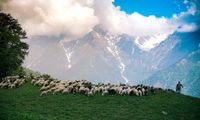
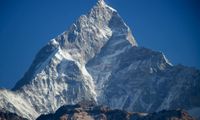

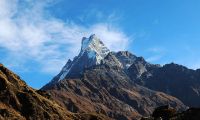
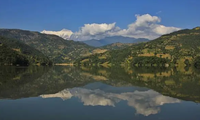
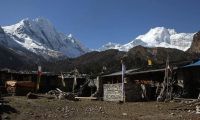
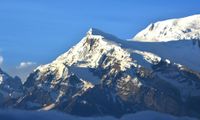
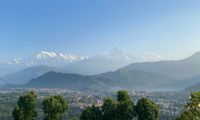
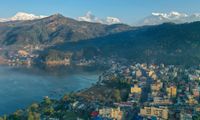

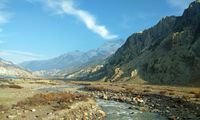
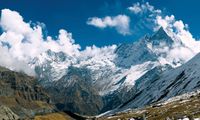
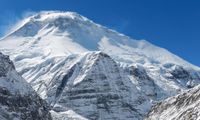
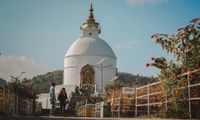
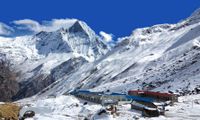
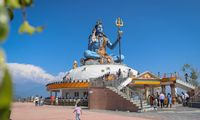
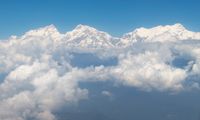
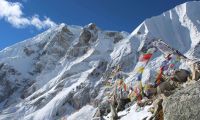


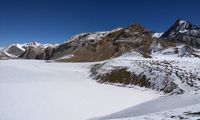
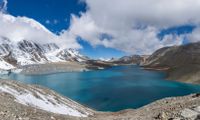

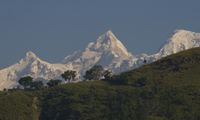
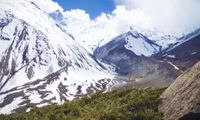
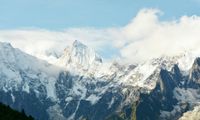
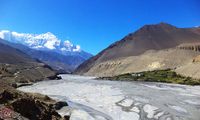
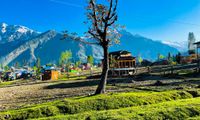
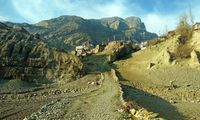
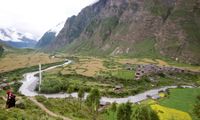
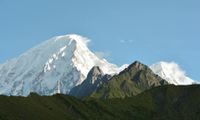
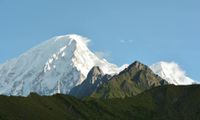
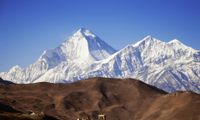
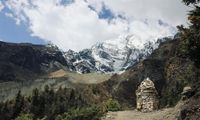
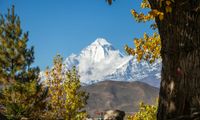

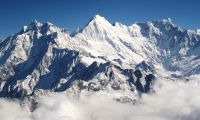

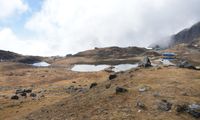
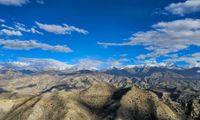
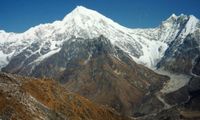
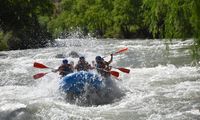
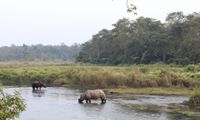
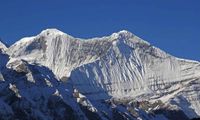
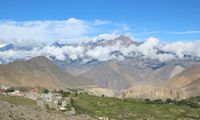
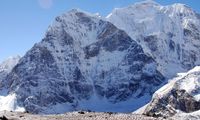
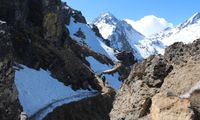
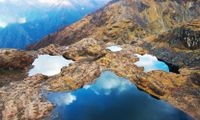
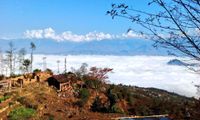
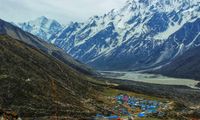
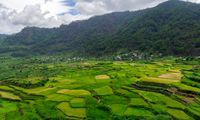
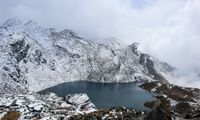
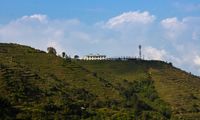
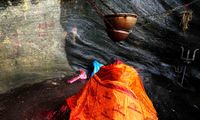
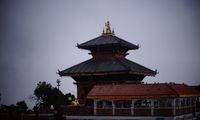

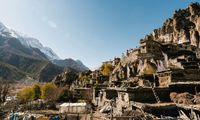
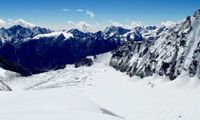
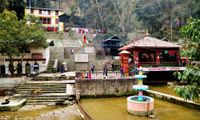
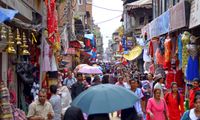
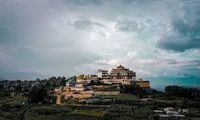
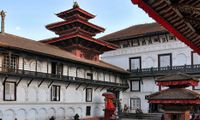

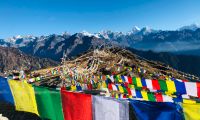
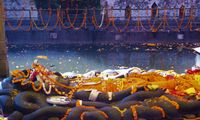
.jpg)
